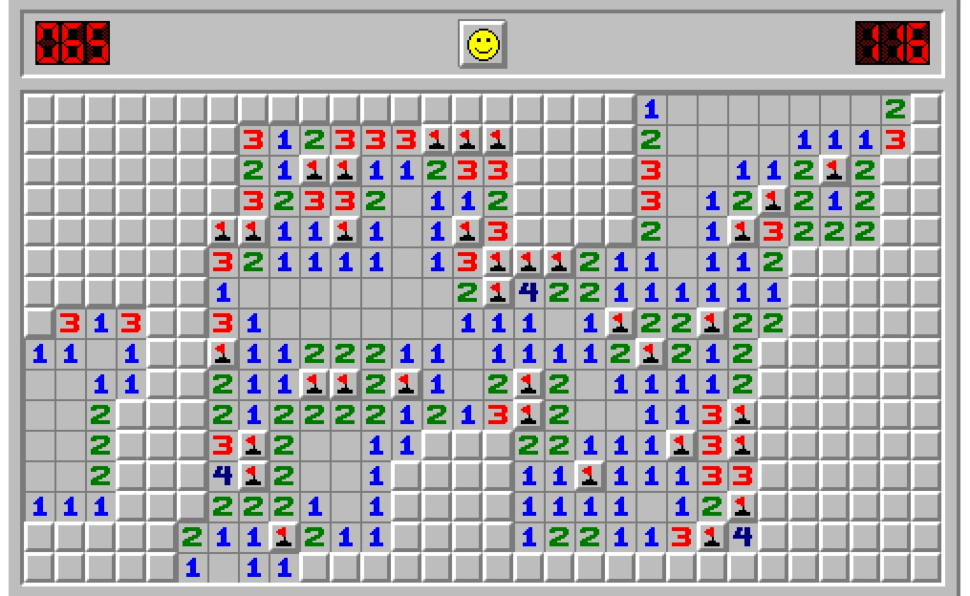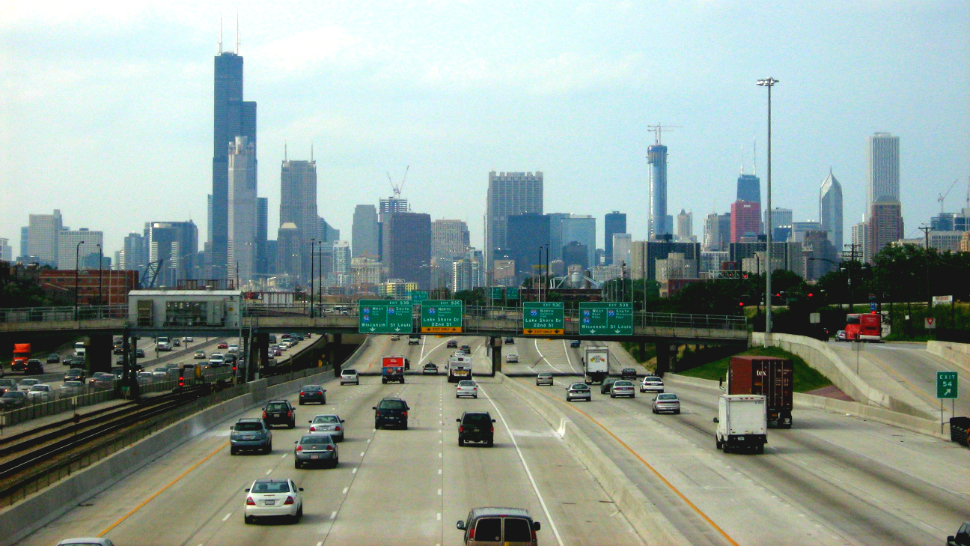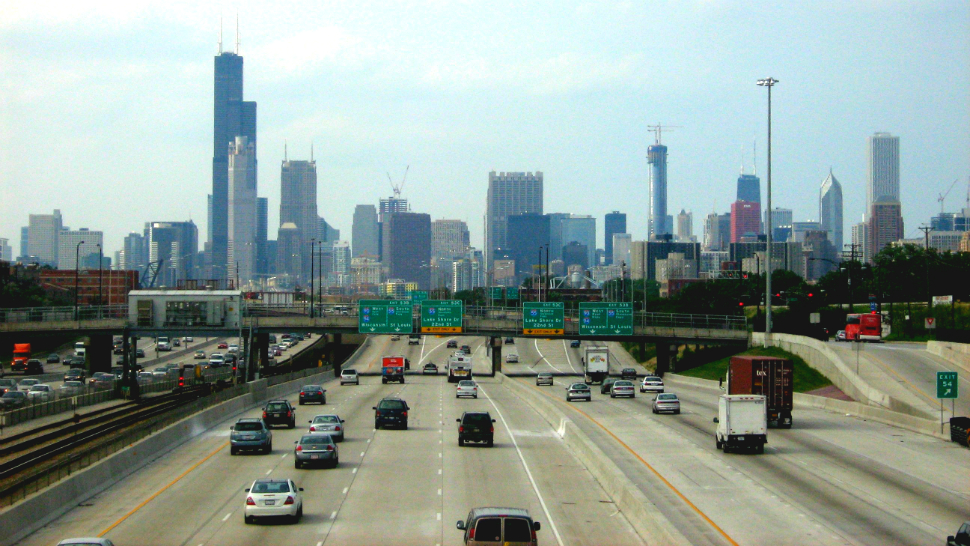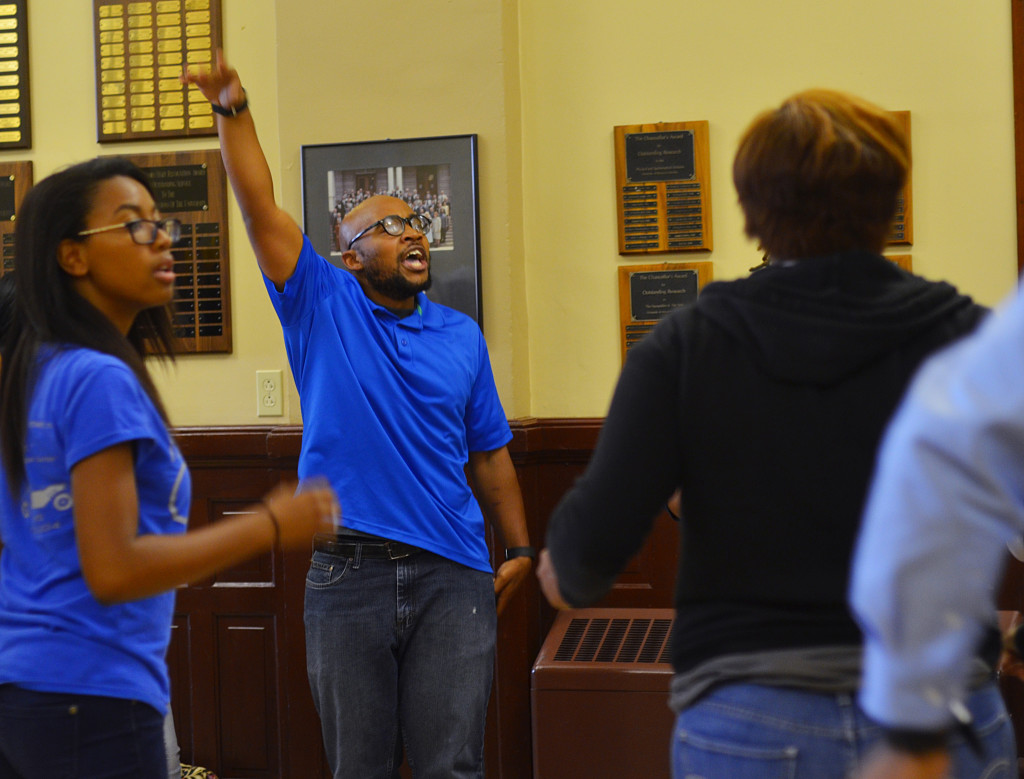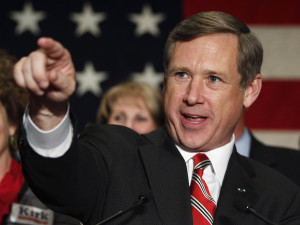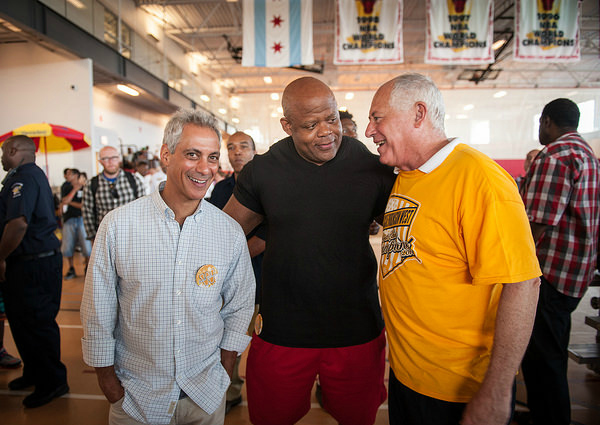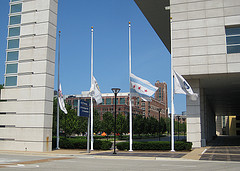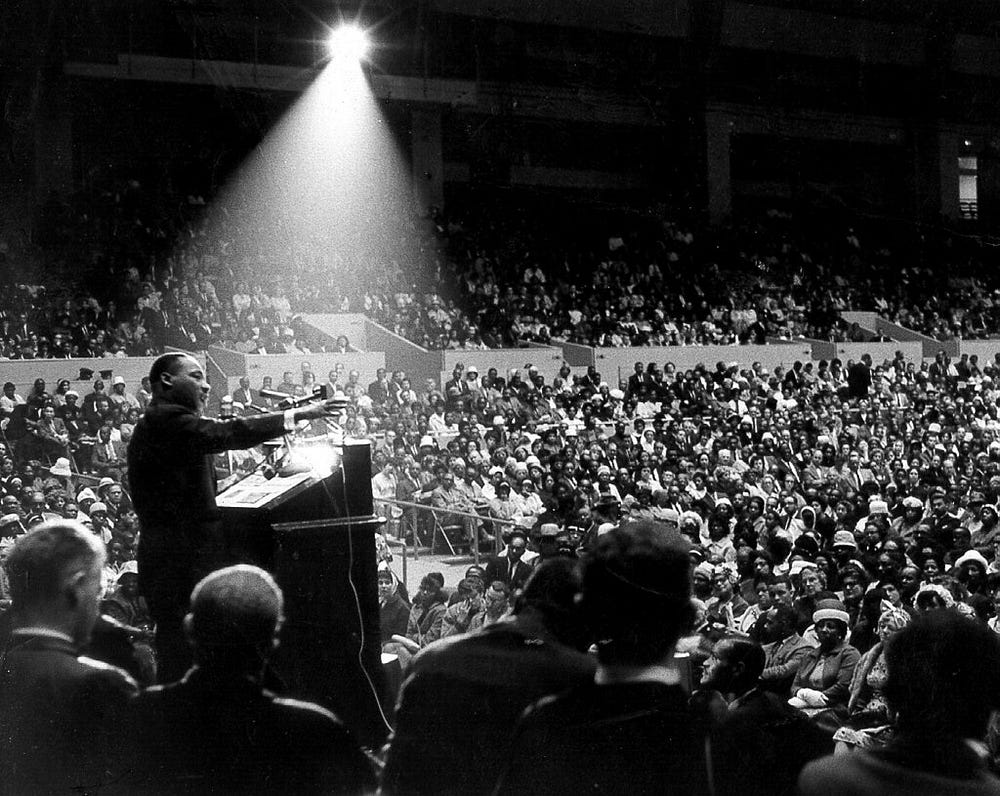
“Martin Luther King, Jr. San Francisco June 30 1964” by geoconklin2001 is licensed under CC BY-NC-ND 2.0
Originally written in January 2022; updated in January 2023
I’ve been thinking a lot about this Martin Luther King quote today:
And the final thing that I would like to say to you this morning is that the world doesn’t like people like Gandhi. That’s strange, isn’t it? They don’t like people like Christ. They don’t like people like Abraham Lincoln. They kill them.
It’s from his Palm Sunday sermon on Mohandas K. Gandhi, delivered on March 22, 1959.
The world did not like people like Martin Luther King. They killed him.
Here’s a fun game you can play on Martin Luther King’s birthday:
For every politician who posts one of MLK’s quotes on social media — it’s probably going to be the one about his kids being judged by their character, not their skin color — scroll back through their recent social media posts and look for the last still-living Black leader they took a photo with, quoted, or praised.
Award one point for every post that qualifies. Five points awarded if that Black leader has been involved in a recent protest movement. Ten points if he or she said “Black Lives Matter.”
Here’s another one: If a United States senator posts an MLK quote, ask them if they’ll vote for comprehensive voting rights legislation like the Freedom to Vote Act or the John R. Lewis Voting Rights Act.
Without saying as much, Heather Cox Richardson points out that those who oppose the expansion or protection of the right to vote would have been the same people who opposed the Voting Rights Act back in 1965, three years before King was killed by an assassin.
To put it another way: it’s very easy to support people and concepts that are in the past, but the real measure of a person’s dedication to justice is whether they support it today.
The river of irony formed by, say, Virginia Governor Glenn Youngkin using a King quote to defend a ban on the possibility of kids learning about how race and history intersect is so deep and wide that it’s impossible to cross.
Youngkin isn’t alone here. The cuddly, stuffed-animal version of Martin Luther King is now used to sell everything from mattresses to the sincerity of people who say they “don’t see color.”
In this Saturday morning cartoon rendering of the man who was shot for his beliefs, we have sanded off the rough edges of King’s crusades against capitalism, poverty, and war; these are the same edges King used to force America into a state of discomfort over its failure to “be true to what you said on paper.”
The rough-edged King is where we should seek our inspiration. In words written in the final chapter of his final book, Where Do We Go From Here, he said:
“Our only hope today lies in our ability to recapture the revolutionary spirit and go out into a sometimes hostile world declaring eternal opposition to poverty, racism, and militarism.”
The following all come from speeches, essays, and articles written by Martin Luther King and collected in The Radical King, edited by Dr. Cornel West.
In the introduction, West quotes King from 1967: “I am nevertheless greatly saddened … that the inquirers have not really known me, my commitment, or my calling.”
West compares King’s de-radicalized image to the way Nelson Mandela was painted later in life, describing them both as “Santa Claus-fied…into non-threatening and smiling old men with toys in their bags and forgiveness in their hearts.”
In the collection of pieces in The Radical King, the lie is put to that image and it provides us with timeless wisdom for this moment.
“I had also learned that the inseparable twin of racial injustice was economic injustice.”
— “Pilgrimage to Nonviolence, 1958”
In a chapter of his book “Stride Toward Freedom: The Montgomery Story,” King speaks of his experiences as a teen in Atlanta when he had “come perilously close to resenting all white people.”
“I had passed spots where Negroes had been savagely lynched, and had watched the Ku Klux Klan on its rides at night. I had seen police brutality with my own eyes and watched Negroes receive tragic injustice in the courts.”
It’s not hard to read these words and envision khaki-clad, ersatz Nazis marching in Charlottesville or the Proud Boys and Oath Keepers storming the Capitol to hijack democracy. Or the “not guilty” verdicts handed down in the deaths of Trayvon Martin or the lack of charges against those who killed Tamir Rice.
Later, King talks about his work in a factory “that hired both Negroes and whites…and [I] realized that the poor white was exploited just as much as the Negro.”
He critiques capitalism as a failure “to see the truth in collective enterprise” and communism / Marxism as a failure “to see the truth in individual enterprise.”
“Man must never be treated as a means to the end of the state, but always as an end within himself,” King warns as a bulwark against depriving a man of freedom. “Capitalism is always in danger of inspiring men to be more concerned about making a living than making a life.”
Something to think about as we consider the real meanings behind The Great Resignation.
“The nonviolent resister would contend that in the struggle for human dignity, the oppressed people of the world should not succumb to the temptation of becoming bitter or indulging in hate campaigns. To retaliate in kind would do nothing but intensify the existence of hate in the universe.”
— Pilgrimage to Nonviolence, 1958
In the same essay, King reminds us what nonviolent resistance really means. This exploration is a key wedge between the true King and the sepia-toned example he’s often described as.
Non-violence as a tactic was not about asking nicely, staying off the streets, and keeping the status quo. It was about acting as a true societal disrupter and pouring sand in the gears.
It was also about strength.
“True pacifism is not unrealistic submission to evil power…it is rather a courageous confrontation of evil by the power of love, in the faith that it is better to be the recipient of violence than the inflicter of it.”
A hard value to live up to and not an easy road to walk. Can we meet the challenge of this the next time we are faced with those who want to create a two-tiered system of justice?
“All humanity is involved in a single process, and all men are brothers. To the degree that I harm my brother, no matter what he is doing to me, to that extent I am harming myself.”
“He revealed that far from the tragic era white historians described, it was the only period in which democracy existed in the South.”
— On DuBois’s book Black Reconstruction, from a speech printed in the journal “Black Titan.”
King on DuBois is full of love and praise while embracing our country’s full and unruly history of race. One line seems to foretell the lazy dangers of Twitter-based discourse:
“Above all he did not content himself with hurling invectives for emotional release and then to retire in smug passive satisfaction.”
He goes on to say:
“History had taught [DuBois] that it is not enough for people to be angry — the supreme task is to organize and unite people so that their anger becomes a transforming force.”
King also has some words for those who would remove the history of race from the history of our country:
“When they corrupted Negro history, they corrupted American history because Negroes are too big a part of the building of this nation to be written out of it without destroying scientific history.”
“I have almost reached the regrettable conclusion that the Negro’s great stumbling block is not the White Citizens’ Counciler or the Ku Klux Klanner, but the white moderate, who is more devoted to the ‘order’ than to justice; who prefers a negative peace which is the absence of tension to a positive peace which is the presence of justice; who constantly says ‘I agree with the goal you seek, but I cannot agree with your methods of direct action; who paternally believes he can set the timetable for another man’s freedom…”
— “Letter from a Birmingham Jail”
The entire unedited “Letter from a Birmingham Jail” is still so urgent, relevant, and fiery. It is as much a warning for now as it was then.
“There are forty million poor people here, and one day we must ask the question ‘Why are there forty million poor people in America?’ And when you begin to ask that question, you are raising a question about the economic system, about a broader distribution of wealth.”
— “Where Do We Go From Here,” King’s final speech to the Southern Christian Leadership Conference in 1967
Described by West as “his last and most radical SCLC presidential address,” the speech denounces capitalism as an end, embraces a guaranteed national income, and takes aim at poverty.
Ever the writer, King notes the hypocrisy of Western language.
“There are some 120 synonyms for blackness and at least sixty of them are offensive, such words as blot, soot, grim, devil, and foul. And there are some 134 synonyms for whiteness and all are favorable, expressed in such words as purity, cleanliness, chastity, and innocence.”
Woven throughout is a reminder of how the power of nonviolence is truly power, a power rooted in love.
“Power without love is reckless and abusive, and that love without power is sentimental and anemic.”
He goes on to discuss the Watts riots, his equal critiques of capitalism and communism, and provides the compass for the rest of King’s mission had he lived:
“The problem of racism, the problem of economic exploitation, and the problem of war are all tied together. These are the triple evils that are interrelated.”
“When there is massive unemployment in the Black community, it’s called a social problem. But when there is massive unemployment in the white community, it’s called a depression. With the Black man, it’s ‘welfare,’ with the whites it’s called ‘subsidies.’ This country has socialism for the rich, rugged individualism for the poor.
— “The Other America”
King would later put an even finer point on this critique of inequality.
In a March 1968 speech, King spoke to Local 1199 in New York City, which West describes as “a union consisting largely of African Americans, Puerto Ricans, and other people of color.”
“People are always talking about menial labor. But if you’re getting a good wage…that isn’t menial labor. What makes it menial, is the income, the wages.”
“The riot is the language of the unheard. And what is it that America has not heard? … It has failed to hear that large segments of white society are more concerned about tranquility and the status quo than about justice, humanity, and equality, and it is still true.”
“If they are America’s angry children today, the anger is not congenital. It is a response to the feeling that a real solution is hopelessly distant, because of the inconsistencies, resistance, and faintheartedness, of those in power.”
— Black Power, “Where Do We Go From Here,” 1967
If there’s anything in King’s final book that speaks to what he would think of the Black Lives Matter movement, it’s this chapter that reflects on the Black Power movement of the late 1960s.
So often we hear disingenuous concern trolling about the current young Black leaders in America and how they ought to be more like the false, sanitized King. Yet King notes “many of the young people proclaiming Black Power today were but yesterday the devotees of Black-white cooperation and nonviolent direct action.”
Still, while he understood their rage, he also returned to his themes of power and love and how they should be a means to a political end.
“Power, properly understood, is the ability to achieve purpose.”
“Power at its best is love implementing the demands of justice. Justice at its best is love correcting everything that stands against love.”
“In his struggle for racial justice, the Negro must seek to transform his condition of powerlessness into creative and positive power. One of the most obvious sources of this power is political.”
“When they look around and see that the only people who do not share in the abundance of Western technology are colored people, it is an almost inescapable conclusion that their condition and their exploitation are somehow related to their color and the racism of the white Western world.”
— “Where Do We Go From Here,” 1967
In the final chapter of his last book, King speaks of apartheid around the world, in economic and cultural terms, throughout Africa, Asia, and Latin America. He cautions against prejudice turned into institutional racism, warning that:
“One cannot hope to keep people locked out of the earthly kingdom of wealth, health, and happiness. Either they share in the blessings of the world or they organize to break down and overthrow the structures or governments which stand in the way of their goals.”
As we face the inequity of everything from food to vaccines across the world, it’s worth noting this chapter is in the section of The Radical King titled “Prophetic Vision.”
“Money devoid of genuine empathy is like salt devoid of savor, good for nothing except to be trodden under the foot of men.”
Yet hope is never far from King’s mind as in this line…
“One of the best proofs that reality hinges on moral foundations is the fact that when men and women and governments work devotedly for the good of others, they achieve their own enrichment in the process.”
And in this brief summation of an almost Buddhist philosophy…
“‘I’ cannot reach fulfillment without ‘thou.’ The self cannot be self without other selves. Self-concern without other-concern is like a tributary that has no outward flow to the ocean.”
Another relevant passage to our current moment — especially the opposition to a new voting rights act — is King’s tweaking of “right-wing slogans on ‘government control’ and ‘creeping socialism’” which he says are “as meaningless as the Chinese Red Guard slogans against ‘bourgeois revisionism.’”
King also returns to the strength of nonviolence:
“True nonviolence is more than the absence of violence. It is the persistent and determined application of peaceable power to offenses against the community — in this case, the world community.”
“Peaceable power” could be read many ways, but it’s hard not to read it as the power of voting rights. A ringing endorsement of his own legacy, carried on by John Lewis, and in the words of a bill bearing his name.
If the leaders quoting Martin Luther King truly believe in his words today, they’ll propose new legislation that brings them into the present.
